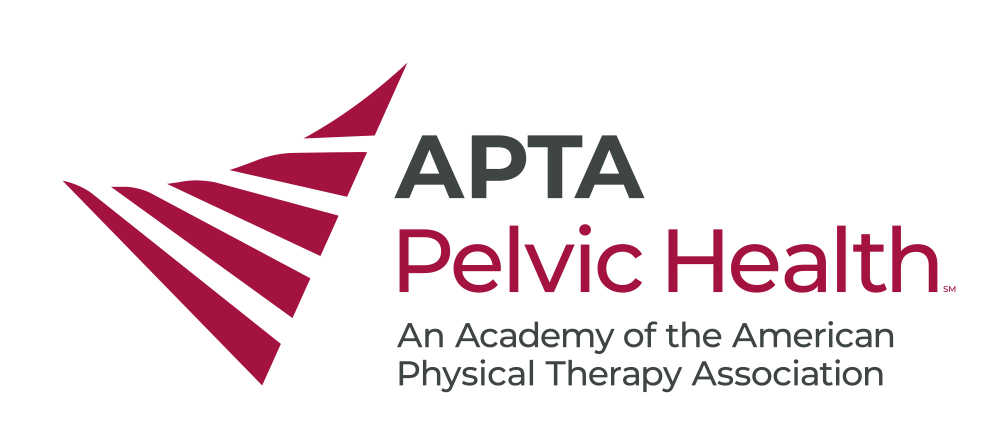Pelvic Floor Physical Therapy: Allowing the Elderly to Age in Place
As a person gets older, maintaining independence and quality of life becomes increasingly important. Many older adults wish to remain in their homes for as long as possible, a concept known as "aging in place." However, age-related health issues, such as changes in mobility, incontinence, and pain, can make staying in their home a challenge. Pelvic floor physical therapy can significantly improve the ability of older individuals to age in place, however it is often overlooked as many people think these age-related changes are “normal” and just something that “need to be dealt with.”
In this blog post, we'll explore how pelvic floor physical therapy can help aging individuals improve their strength, function, and overall health, which can allow them to stay in their homes for as long as possible.
What is Pelvic Floor Physical Therapy?
Pelvic floor physical therapy focuses on strengthening and re-educating the muscles of the pelvic floor and pelvic girdle, which support our pelvic organs including the bladder, bowels, and reproductive organs. For the geriatric population, these muscles may weaken over time due to hormone changes secondary to aging/menopause, childbirth, or surgery. Pelvic floor dysfunction can lead to a variety of conditions, including:
- Urinary incontinence: The inability to control urination, leading to urine leakage with activity or the urge to urinate.
- Fecal incontinence: Difficulty controlling bowel movements, leading to fecal leakage.
- Pelvic pain: Discomfort in the lower abdomen or pelvic region, which could be due to arthritis, post-surgical pain, decreased tissue extensibility due to hormonal changes, or tissue tension.
- Sexual dysfunction: Can be caused by decreased lubrication due to hormonal changes, muscle weakness.
- Postural problems: Pelvic floor and pelvic girdle muscle weakness that can affect posture and mobility.
Pelvic floor physical therapists are trained to assess these muscles and develop personalized rehabilitation programs to address specific concerns. The goal is to restore optimal function and alleviate symptoms, allowing individuals to regain independence.
How Pelvic Floor Physical Therapy Helps the Elderly Age in Place
- Managing Incontinence and Preventing Falls
Urinary incontinence is one of the most common health issues among older adults, affecting up to 50% of elderly individuals. This condition can cause significant disruptions to daily life, from the need for frequent bathroom trips to the embarrassment of leakage, leading some people to limit their social activities or even avoid leaving their homes.
Pelvic floor physical therapy has the strongest level of evidence as a treatment for incontinence. By strengthening the muscles of the pelvic floor, if needed, pelvic floor physical therapy can help regain bladder function and reduce leakage. For elderly individuals, this can mean fewer trips to the bathroom, greater mobility, and reduced risk of falls, which often occur when trying to get to the bathroom quickly. Since falls are a leading cause of injury and hospitalization in older adults, this is especially important for maintaining independence and staying safe at home.
- Alleviating Pelvic Pain and Discomfort
Pelvic pain, whether from arthritis, post-surgical complications, or hormonal changes, can be a major barrier to aging in place. It can interfere with movement, make activities of daily living painful, and even contribute to depression and anxiety due to chronic discomfort.
Pelvic floor physical therapy can help alleviate pelvic pain by targeting tight pelvic floor muscles and strengthening muscles around the pelvic girdle that are weaker through specialized exercises and manual therapy techniques. These treatments can increase blood flow, reduce muscle tension, and restore proper function in the pelvic region. For the elderly, relieving pelvic pain can significantly improve their ability to engage in physical activity, manage personal care, and continue to enjoy all aspects of their homes.
- Supporting Mobility and Balance
As people age, they often experience declines in balance and mobility due to muscle weakness, joint stiffness, or neurological conditions. The pelvic floor plays an important role in overall core stability, posture, and movement. By strengthening these muscles and other muscles of the pelvic girdle, pelvic floor physical therapy can enhance balance and reduce the risk of falls. Improved posture and strength also enable older adults to move more easily, sit and stand with greater ease, and perform tasks such as lifting or carrying objects without pain or strain.
- Empowering Independence and Reducing Dependency on Caregivers
One of the most important aspects of aging in place is maintaining as much independence as possible. Pelvic floor physical therapy equips elderly individuals with the tools and exercises they need to manage their health more effectively. As individuals increase their strength and range of motion through targeted exercises, this can reduce their reliance on caregivers or family members for assistance with tasks like using the bathroom or dressing.
With the right therapeutic approach, seniors can regain a sense of control over their bodies, leading to greater confidence and self-sufficiency. By addressing pelvic floor issues that impact mobility, incontinence, and comfort, pelvic floor physical therapy can contribute to a more autonomous life at home.
Why Choose Pelvic Floor Physical Therapy?
Pelvic floor physical therapy offers a non-invasive, drug-free solution to many of the common challenges faced by aging individuals. Unlike medications or surgeries, pelvic floor physical therapy focuses on the body’s ability improve through targeted exercises and techniques. It’s an approach that can be customized to an individual’s needs, ensuring they receive the care and attention required for optimal outcomes.
Additionally, pelvic floor physical therapy is often covered by insurance, making it an accessible option for many seniors. With the right professional guidance, individuals can learn techniques they can continue to practice at home, leading to long-term improvements and independence.
Conclusion
Pelvic floor physical therapy is a powerful tool that can significantly improve the lives of elderly individuals, enabling them to age in their homes with greater comfort, safety, and independence. From reducing incontinence and pain to improving mobility and mental well-being, pelvic floor physical therapy addresses key challenges that seniors face as they strive to maintain a fulfilling life in their own homes.

Author: Sara Denton PT, DPT, 2024 CAPP Scholarship Recipient
Author Bio: Sara lives in the Northwest Chicago suburbs with her husband and son. She became interested in pelvic health physical therapy after her own pelvic health journey during pregnancy. When she is not working, Sara loves exercising, yoga, baking, and spending time with her family.


